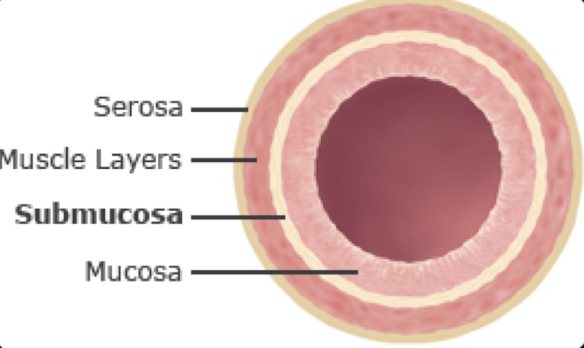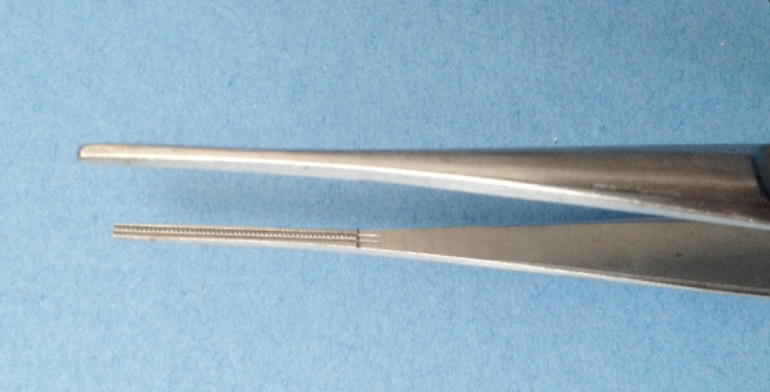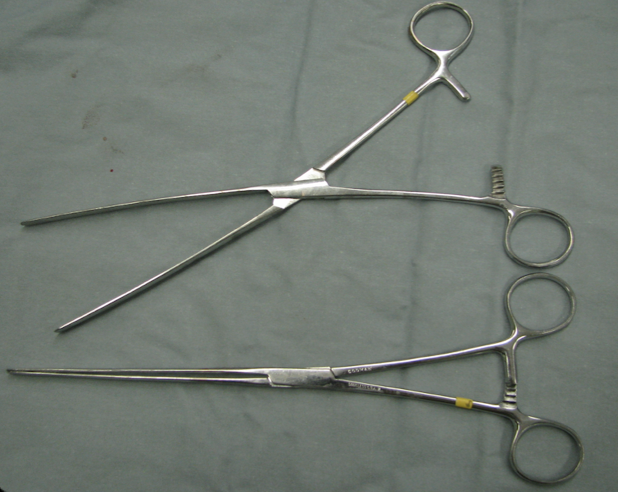Gastrointestinal Surgery: Esophagus/Stomach
1/32
Earn XP
Description and Tags
These flashcards cover key concepts, procedures, and principles of gastrointestinal surgery related to the esophagus and stomach as discussed in the lecture.
Name | Mastery | Learn | Test | Matching | Spaced |
|---|
No study sessions yet.
33 Terms
What is the main objective of performing a gastrotomy in dogs?
To remove foreign bodies.
What surgical procedure is indicated for gastric dilatation volvulus prevention?
Gastropexy.
What type of antibiotic is usually used perioperatively for GI surgery?
First-generation cephalosporin → cefazolin
What are the rudimentary techniques for assessing intestinal viability?
Color, consistency, motility, and bleeding/perfusion.
What is the holding layer in GI closure?
Submucosa → thickest layer with the most collagen

What 2 layers do we need to do for gastric closure
Submucosa + mucosa
Muscularis and serosa
What suture material is recommended for GI closures?
Absorbable monofilament such as polydioxanone (PDS™).
What type of closure is used for esophageal surgery?
1-layer simple continuous appositional closure.
What is a significant challenge affecting esophageal healing?
Constant motion and no serosal coverage.
What are the surgical approaches for cervical and thoracic esophagus?
Ventral midline for cervical and left/right thoracotomy for thoracic.
What is essential for laparotomy success?
An incision from xiphoid to caudal abdomen.
What type of retractor can improve visualization in surgery?
Balfour retractors.
Which forceps are considered atraumatic for surgery?
Debakey thumb forceps.

What are Doyden forceps used for?
occludes bowel

What is the most common indication for a gastrotomy?
Foreign body removal.
What should be done with 'dirty' instruments during surgery?
Separate them from the rest of the surgical table.
What should you avoid when making a gastrotomy?
Making it larger than necessary → incise between greater and lesser curvature away from the pylorus
What type of closure is used for the first layer in gastrotomy?
Use tapered needled → 3-0 PDS continuous
What type of closure is used for the second layer in gastrotomy?
Inverting (Cushing or Lembert), not full thickness → does not provide extra strength
What is a significant complication associated with gastric dilatation volvulus?
Mortality rates of 10-33%.
What is a key treatment goal during surgery for GDV?
Gastric derotation and evaluating gastric wall integrity. Incisional gastropexy
What should happen if gastric resection is performed?
It is important to assess splenic vasculature integrity.
What is one option if complete surgery can't be performed for GDV?
Temporary gastropexy, then close abdomen and refer.
What should you not want to see during the surgical evaluation of GDV?
Signs of necrotic gastric tissue.
What incisional technique is used in incisional gastropexy?
Full thickness incision in transversus abdominis.
What is the partial thickness incision made through during an incisional gastropexy?
Seromuscular layer of pyloric antrum.
What is the recommended method for performing gastrotomy?
Isolate stomach with sponges and stay sutures.
What is the primary source of videos and pictures related to this surgery lecture?
Youtube: www.youtube.com/@smallanimalsurgery597.
What is the significance of the submucosa in GI surgery?
It plays the role of the holding layer.
What is indicated for patients with signs of gastric dilatation?
Immediate surgical intervention.
What is the purpose of omentalize during closure?
To provide additional support without suturing it in place.
What positions might be utilized for thoracic approaches in esophageal surgeries?
Left or right 4th and left 7-9th intercostal thoracotomy.
Why should gastric edges be handled indirectly during closure?
To reduce the risk of compromising blood supply.